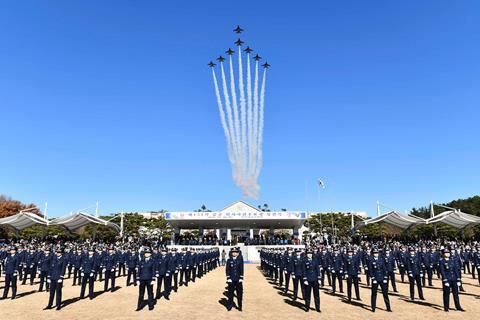Seoul has commenced research into the development of a locally designed fighter engine to increase the nation’s aerospace and export capabilities.
The new engine will be ready to power domestically produced fighters during the second half of the 2030s, according to South Korea’s Defense Acquisition Program Administration (DAPA).

DAPA announced the initiative following a meeting between government and military officials, as well as 20 companies that will be involved in the work.
The engine will have a thrust of 15,000lb (66.8kN) and is foreseen powering indigenous fighter aircraft and unmanned systems. This thrust would put the new engine in roughly the same class as the GE Aerospace F404-GE-102 that powers the Korea Aerospace Industries T-50/FA-50 family of advanced jet trainers and light attack aircraft – a type that has proven popular on the export market. A GE Aerospace fact sheet places the F404-GE-102 in the 17,700lb thrust class.
Moreover, South Korea is working on concepts for unmanned collaborative combat aircraft to serve alongside manned fighters. Such aircraft will require high performance engines.
DAPA acknowledges that while South Korea has significant experience in the license manufacturing of aircraft engines, it lacks the ability to independently design and manufacture them. Nonetheless, local research institutes and companies are conducting work related to engine design, materials, and processes.
DAPA contends that relying on foreign manufacturers for engines and core parts makes it difficult to “independently improve performance”. Moreover, foreign-produced components can serve as a brake on defence exports, particularly the export of unmanned air vehicles.
It foresees the market for both military and civil engines growing, but says that only a few countries – it specifies the USA and the UK – can develop aircraft engines.
DAPA official Han Guyeong-ho suggests there is a degree of urgency in the effort.
“Although we are short on aviation engine experts and related infrastructure, we must pool all of our national capabilities and begin developing cutting-edge aviation engines before it is too late,” says Han.
“The Defense Acquisition Program Administration will establish an effective business plan through this concept study and lead the development of advanced aircraft engines to success through cooperation with related ministries.”















































